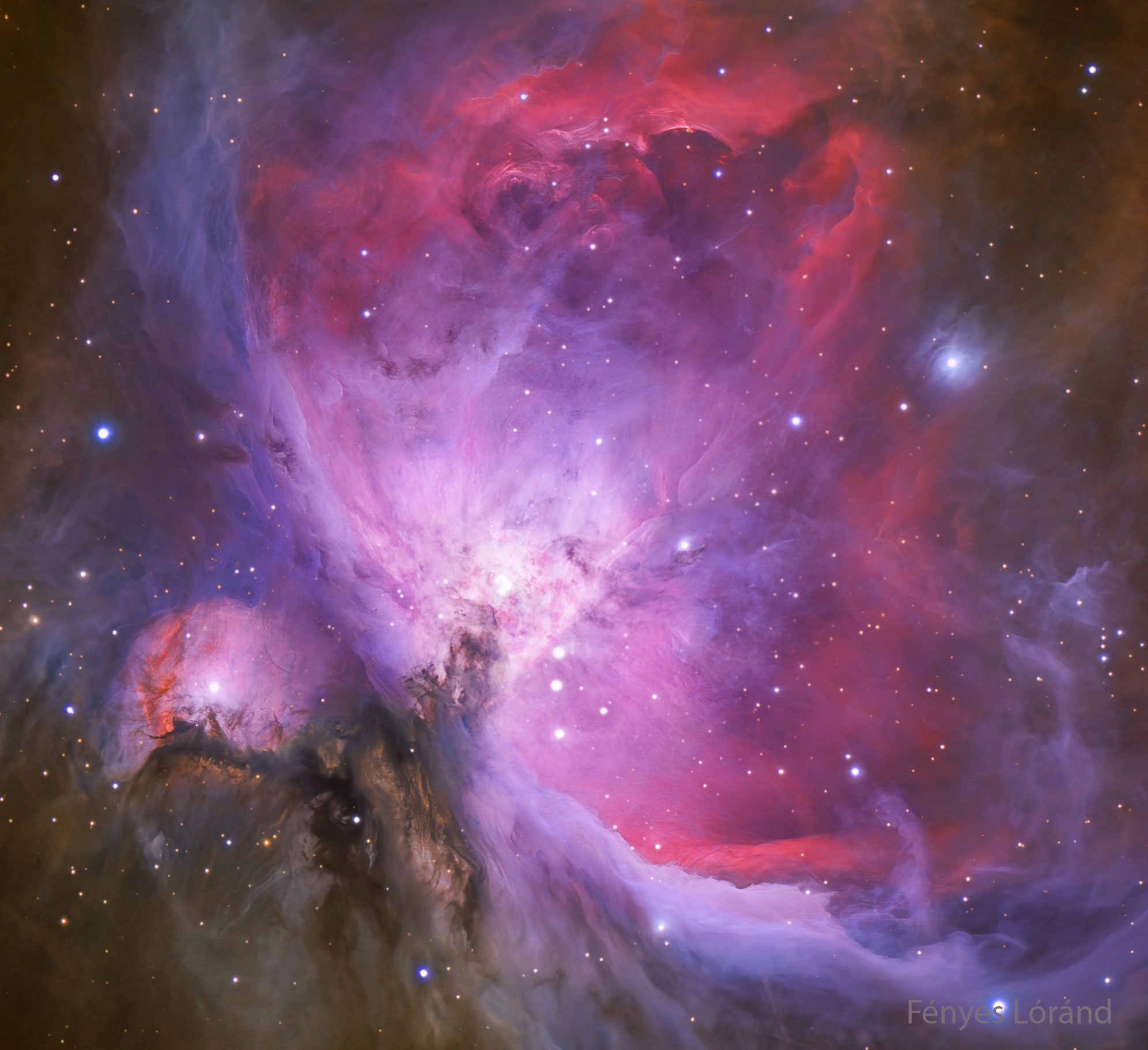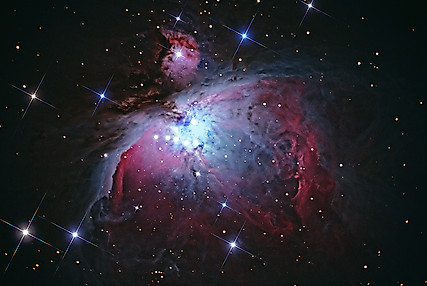
Posted on 11/04/2024 12:42:13 PM PST by MtnClimber
Explanation: The Great Nebula in Orion, an immense, nearby starbirth region, is probably the most famous of all astronomical nebulas. Here, glowing gas surrounds hot young stars at the edge of an immense interstellar molecular cloud only 1500 light-years away. In the featured deep image in assigned colors highlighted by emission in oxygen and hydrogen, wisps and sheets of dust and gas are particularly evident. The Great Nebula in Orion can be found with the unaided eye near the easily identifiable belt of three stars in the popular constellation Orion. In addition to housing a bright open cluster of stars known as the Trapezium, the Orion Nebula contains many stellar nurseries. These nurseries contain much hydrogen gas, hot young stars, proplyds, and stellar jets spewing material at high speeds. Also known as M42, the Orion Nebula spans about 40 light years and is located in the same spiral arm of our Galaxy as the Sun.
For more detail go to the link and click on the image for a high definition image. You can then move the magnifying glass cursor then click to zoom in and click again to zoom out. When zoomed in you can scan by moving the side bars on the bottom and right side of the image.

🪐 🌟 🌌 🍔
Looks like ET ...........
M42 is always a crowd pleaser.
NASA is a propagandist organization. These pictures or CGI creations. Everything that is observed is within the boundaries of our system)Firmament. The colors, as depicted, are fake creations produced by computer artists.
Oh wow. M42 is the tip of Orion’s... ah... sword.
“I’ve seen things you people wouldn’t believe. Attack ships on fire off (the) shoulder of Orion. I watched C-beams glitter in the dark near the Tannhäuser Gate. All those moments will be lost in time, like tears in rain. Time to die.”
I see a dove.
Job 38:31
Canst thou bind the sweet influences of Pleiades, or loose the bands of Orion?
Amo 5:8
Seek him that maketh the seven stars and Orion, and turneth the shadow of death into the morning, and maketh the day dark with night: that calleth for the waters of the sea, and poureth them out upon the face of the earth: The LORD is his name:
Wow.
It’s a celestial showpiece! If you know just where to look in the winter sky at night, you’ll see it without any optical aid. Binoculars make it stand out. The bigger the telescope used to observe it, the more light is gathered in and the more of it you can see.
BlueLancer, that was a great movie.
Not on THIS object. Thousands of amateur astronomers have photographed it and it looks just the same. The red you see in the photo is how hydrogen gas looks after a long exposure is taken. Very large telescopes (20”-30” in diameter)
Show a hint of the colors, but a really dark sky is needed for it to stand out.
Virtually no light pollution.
“These pictures or CGI creations. ... The colors, as depicted, are fake creations produced by computer artists.”
Yes. DH is an astro-photographer, and after he’s captured images with the telescope, he can process them to look many different ways. (He’s not AI - LOL!) The stuff NASA puts out there is art, not science. And they’ve been doing this for decades for the “oooh and aaah” factor.
1. The image in this article was not produced by NASA.
2. My image below of M42 was not produced by a computer artists
3. I can assure you my image below was not a Computer Generated Image, or CGI.

👍
Nice image!

Spectacular!
Disclaimer: Opinions posted on Free Republic are those of the individual posters and do not necessarily represent the opinion of Free Republic or its management. All materials posted herein are protected by copyright law and the exemption for fair use of copyrighted works.